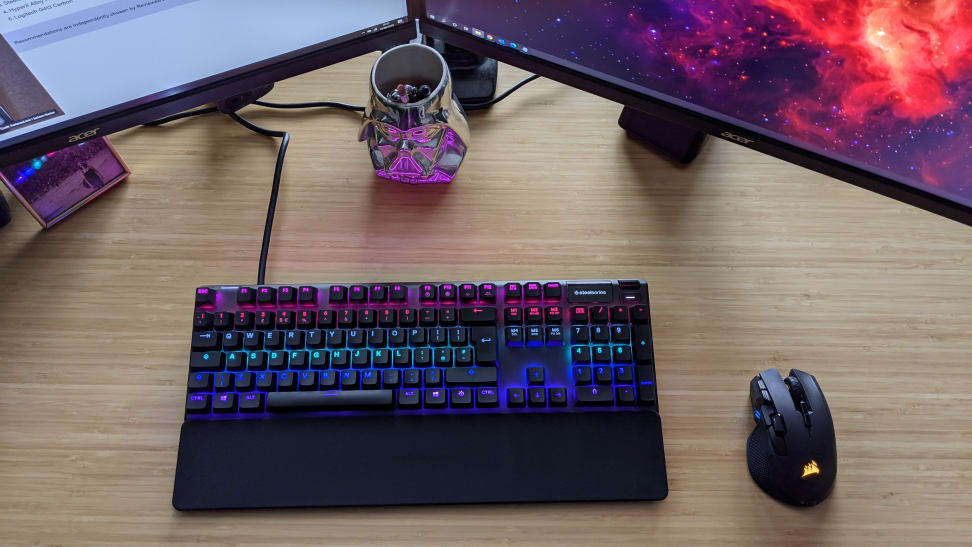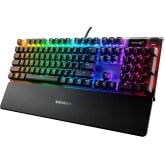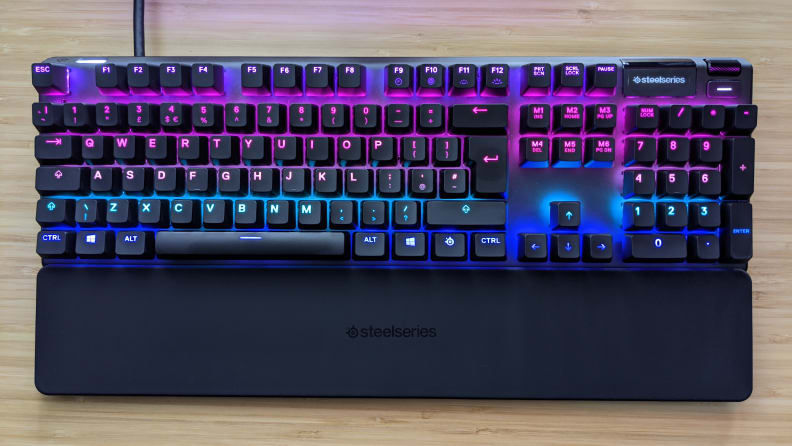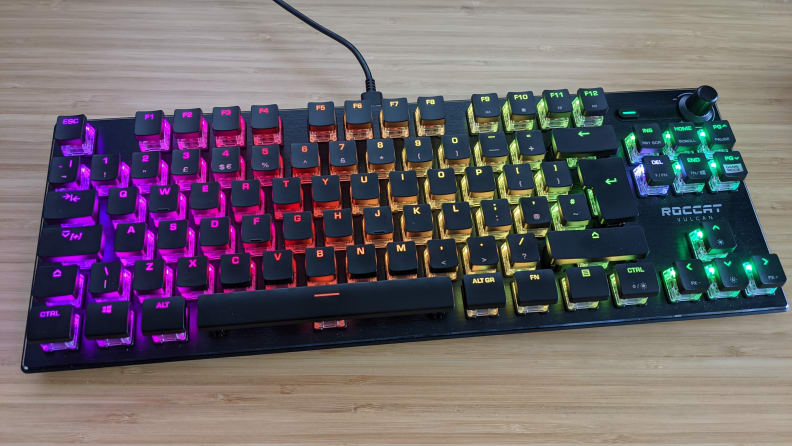-
Connection: USB
-
Size: Full-sized, 104 keys
-
Key switches: OmniPoint
Even though the SteelSeries Apex Pro is a full-sized keyboard with a number pad, it doesn’t take up too much room on the desktop. (There is also a tenkeyless version and the SteelSeries Apex Pro Mini Wireless is even smaller at 60% of the original.)
The build quality is top class, with a matte black aluminum board and an incredibly comfortable, soft-touch wrist rest that connects to the Apex Pro magnetically.
There’s a small OLED at the top right, along with a clickable roller and a large key that serve as dedicated media controls. You can make the OLED display your gamer tag or even a GIF animation, but it also offers some welcome feedback on your chosen settings and profiles, so you don’t need to tab out of your game to tweak things.
The headline feature here is the OmniPoint switches. Not only does SteelSeries claim that they’re more responsive and durable than conventional mechanical keyboard switches, they also offer customizable actuation points. This means you can configure your preferred travel distance, from the lightest of touches to a deeper press (from 0.1 mm down to 4 mm). It doesn’t change the excellent typing feel, but it does change when the key press registers.
Since you can set sensitivity per individual key, it allows you to dampen certain keys you find yourself accidentally pressing, but leave WASD super sensitive, for example. Take the time to set up different profiles for work and play, and even for individual games, and you will feel the benefit. It’s also relatively quiet for a mechanical board.
The SteelSeries Apex Pro features bright, fully configurable RGB lighting and the SteelSeries Engine 3 software is fairly easy to get to grips with. You can set main and meta key bindings, use a macro editor, tweak the actuation force, set up lighting effects and colors, and even load a custom image or GIF on the OLED screen. (Just like the Asus ROG Azoth.) There’s room for five onboard profiles.
With cable routing left, middle, or right, and a passthrough USB with its own lit-up port on the left, the Apex Pro embodies thoughtful design. Both gaming and typing on this keyboard are an absolute pleasure and nothing offers deeper customization. If you want something smaller, the SteelSeries Apex Pro TKL drops the numpad.






















